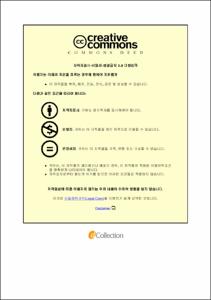The Factors Affecting Purchase Intention of Foreign Products: Focusing on Korean Cosmetic Products in Vietnam
- Abstract
- The development of science in the field of technology and social culture has influenced the attitude of someone's life. Physical attractiveness is of high concern for people all around the world because it is in the human instinct to strive for perfection and new ways to express ourselves. Therefore, cosmetics were invented and quickly became an essential need of every person. Since the beginning of the twentieth-century, the cosmetic industry has been growing at fast track with a handful of multinational corporations which always try to give people various kinds of beauty products. According to a published report, a Nielsen survey conducted in 2017 indicates that in recent years, Vietnam’s cosmetics market has maintained strong growth, at about 16% a year, and consumers are willing to pay high prices for well-respected international brands. This indicates a huge potential for growth of this sector in Vietnam. Vietnamese consumers are familiar with Korean brand cosmetics compared with cosmetics from other countries. The market share for cosmetics products by foreign countries is as follows: Korea – 30%, EU – 23%, Japan – 17%, Thailand – 13%, US – 10%, and others – 7%. The Korean cosmetic products are often associated with “brand of youth”, “affordable price”, and “being fashionable”. This being the case, it is essential to examine the factors in which influence consumer intention to purchase new cosmetic products. This study examined the potential influences of Korean Wave on country of origin; country of origin on perceived quality and brand credibility; country of origin, perceived quality, brand credibility and subjective norms on the purchase intention of new Korean cosmetic products. Variables in this study are two independent variables which are Korean wave and subjective norm, three mediating variables which are country of origin, perceived quality and brand credibility, and finally, one dependent variable, the purchase intention of Korean cosmetics. These factors have been chosen in this study as the factors mostly affect the Vietnamese customer purchase intention toward Korean cosmetic product.
In this study, a five-point Likert scale was used to measure the components of the research model (5 = strongly agree; 1= strongly disagree). The questionnaire included measurement items of Korean wave, country of origin, brand credibility, perceived quality, subjective norms and purchase intention. All of the items were modified from the previous research. The surveys were distributed via-online through several social media such as Facebook, Zalo, and email. A total of 241 questionnaires were collected and valid questionnaires were 200. The computer software program, Statistical Package for the Social Sciences (SPSS 22) and AMOS 22 were used for all statistical data analysis. There are two separated part analysis to analyze the data. In measurement scales test, data were initially evaluated by Cronbach’s Alpha and exploratory factor analysis (EFA) prior to accessing saturated model confirmatory factor analysis (CFA). Besides, convergent validity, discriminant validity, construct reliability (CR) and average variance extracted (AVE) were calculated to confirm that measurement scales achieved reliability standard. In research model test, structural equation model (SEM) and Bootstrap estimates were employed to analyze the relationships between predictors and dependent variables. The Structural Equation Modeling (SEM) was employed by AMOS 22 to examine the effect of independence factor on dependence factor. Structural equation modeling (SEM) appears to be the appropriate method for addressing the research question about multiple relationships between the dependent, mediating, and independent variables. The hypothesis testing revealed that all of 7 hypotheses had significant relationships between the variables and one hypothesis was rejected.
The outcomes of this research will allow the Korean cosmetic firms to better understand Vietnam’s market and will help them to adopt effective strategies for Vietnamese cosmetic market. The findings of this paper will serve as a guide to Korean cosmetic company who has limited knowledge of Vietnamese customers. This will help them to formulate marketing strategies to gain from Vietnam’s cosmetic markets. This research provides valuable insights for Korean cosmetic companies that had joined Vietnam market or have the intent to invest in Vietnam cosmetic market by indicating the attitude is the most important determinant of purchase intention. The findings of this study suggest that Vietnamese customer has positive attitude toward Korean cosmetic product because of the effect of Korean Wave. As the result, this study suggests that Korean wave country of origin, perceived quality and subjective norms have signification effect on purchase intention of Vietnamese customers to buy Korean cosmetic products. In addition, this research show that brand credibility do not have signification effect to purchase intention of Vietnamese customer toward Korean cosmetic product. This research also helps Korean cosmetic retailers and manufacturers understand more about Vietnamese customer purchase intention behavior so they can develop effective marketing strategies to increase customer purchase intentions for the product
- Issued Date
- 2018
- Awarded Date
- 2019-02
- Type
- Dissertation
- Keyword
- Purchase intention; cosmetic product
- Alternative Author(s)
- Vu Thi Phuong
- Affiliation
- 울산대학교
- Department
- 일반대학원 경영학과
- Advisor
- 김도일
- Degree
- Master
- Publisher
- 울산대학교 일반대학원 경영학과
- Language
- eng
- Rights
- 울산대학교 논문은 저작권에 의해 보호받습니다.
- Appears in Collections:
- Business Administration > 1. Theses (Master)
- 파일 목록
-
-
Download
 200000177282.pdf
기타 데이터 / 766.68 kB / Adobe PDF
200000177282.pdf
기타 데이터 / 766.68 kB / Adobe PDF
-
Items in Repository are protected by copyright, with all rights reserved, unless otherwise indicated.